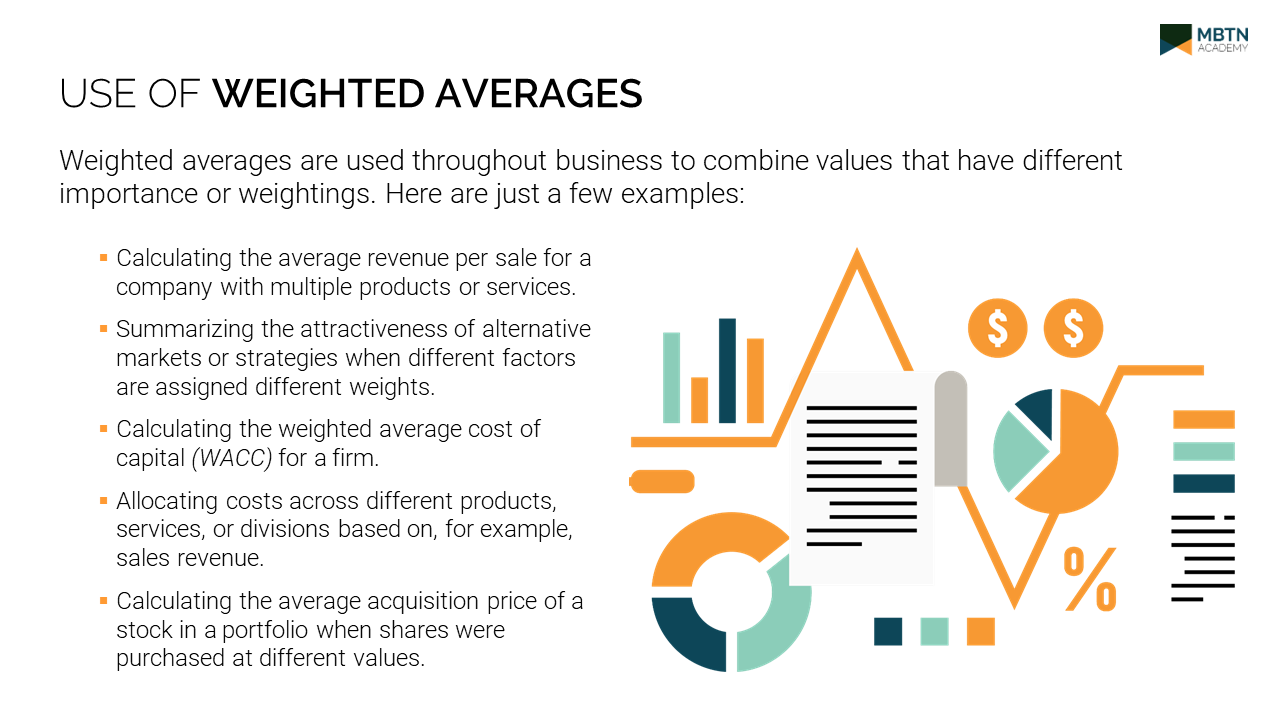03 May Weighted Averages – May’s Free MBTN Tutorial
This month’s free MBTN tutorial preview addresses calculating weighted averages, and is co-authored by Gopala (GG) Ganesh of the University of North Texas. Unlike simple averages that treat all data points equally, weighted averages assign importance to each number according to its relevance or ‘weight’. Understanding how to properly use and interpret weighted averages can enhance your decision-making skills, whether in business, education, or even everyday personal finance.
This module covers the following topics:
- Definition and calculation of weighted average
- Multiple examples of how weighted averages are used in business
- Multi-tiered weighting problems
- Solving for a goal value within a weighted average context
Here are 3 reasons why you should understand and use weighted averages.
1. Accuracy in Representation: Weighted averages provide a more accurate representation of datasets where not all members are equally significant. This prevents skewed data from leading to erroneous conclusions.
2. Better Decision Making: By understanding and applying weighted averages, decision-makers can prioritize factors that have more significant impacts on the overall analysis, leading to smarter, more data-driven decisions.
3. Enhances Problem Solving: Knowledge of weighted averages is essential for solving complex problems in fields like engineering, computer science, and logistics, where different factors contribute unequally to the outcome.
If you’re wondering about some possible uses of weighted average in business, here are just a few examples. You’ll find that it is far more common (and important) than you may realize!
- Calculating the average revenue per sale for a company with multiple products or services.
- Summarizing the attractiveness of alternative markets or strategies when different factors are assigned different weights.
- Calculating the weighted average cost of capital (WACC) for a firm.
- Allocating costs across different products, services, or divisions based on, for example, sales revenue.
- Calculating the average acquisition price of a stock in a portfolio when shares were purchased at different values.
The free link has expired, but check out this month’s tutorial under the Business Education Resources Blog.
If you find this topic valuable and you are faculty at a University or Community College, you might also be interested in our complete catalog of MBTN modules, available for use in academic settings. You can choose any combination of 3 or more modules to suit your needs.
Our complete catalog of MBTN modules
If you’re an individual interested in other business topics, use consider following links to enhance your knowledge base.
MBTN All Modules and Certifications ($99.95)
We hope you enjoyed this month’s tutorial on weighted averages.
Best regards,
Your Team at MBTN Academy
Follow us on Twitter, Mastodon, and LinkedIn



Sorry, the comment form is closed at this time.